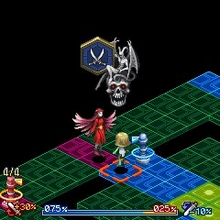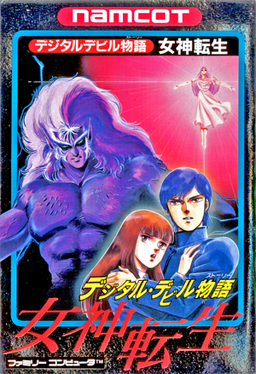
Digital Devil Story: Megami Tensei refers to two distinct role-playing video games based on a trilogy of science fantasy novels by Japanese author Aya Nishitani. One version was developed by Atlus and published by Namco in 1987 for the Famicom—Atlus would go on to create further games in the Megami Tensei franchise. A separate version for personal computers was developed and published by Telenet Japan with assistance from Atlus during the same year.

Shin Megami Tensei If..., stylized as Shin Megami Tensei if…, is a role-playing video game developed and published by Atlus in 1994 for the Super Famicom. It is a spin-off from the Shin Megami Tensei series, itself part of the larger Megami Tensei franchise. Since release, it has been ported to mobile devices, PlayStation and Microsoft Windows; it had also been re-released on the Virtual Console in Japan on Wii in 2011 and Wii U in 2013, as well as Nintendo Switch Online in 2021. The story follows a student of Karukozaka High School after their school is sucked into the realm of demons by a vengeful student's demon summoning spell going wrong.

Majin Tensei is a series of strategy video games published by Atlus. It is a spin-off from Atlus' Megami Tensei franchise, and began with 1994's Majin Tensei. Since then, four further titles have been released: Majin Tensei II: Spiral Nemesis (1995), Ronde (1997), Majin Tensei: Blind Thinker (2007) and Majin Tensei: Blind Thinker II (2008). The player navigates a field seen from a top-down or three-quarters perspective as a human character, and battles demons; they can also recruit demons, and fuse multiple allied demons to create new, stronger demons.

Devil Summoner: Soul Hackers is a 1997 role-playing video game developed by Atlus. The game is the second installment in the Devil Summoner series, itself a part of the larger Megami Tensei franchise. Originally published by Atlus for the Sega Saturn, it was later ported to the PlayStation in 1999 and Nintendo 3DS in 2012.
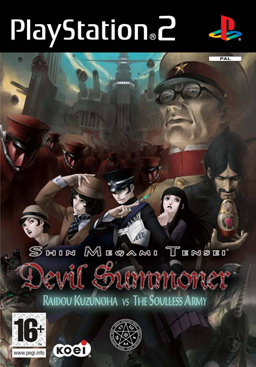
Devil Summoner: Raidou Kuzunoha vs. the Soulless Army is an action role-playing game developed by Atlus for the PlayStation 2. The game is the third in the Devil Summoner series, which is a part of the larger Megami Tensei franchise. It was published by Atlus in Japan and North America in 2006, and in Europe the following year.

Shin Megami Tensei: Devil Summoner is a role-playing video game developed and published by Atlus. Forming part of the Megami Tensei franchise, it is the first title in the Devil Summoner series. It was first released for the Sega Saturn in December 1995, and received a port to the PlayStation Portable in December 2005. Despite reports of it being planned for localization, neither version has been released outside Japan.

Devil Summoner, initially marketed as Shin Megami Tensei: Devil Summoner, is a video game franchise developed and primarily published by Atlus. Focused on a series of role-playing video games, Devil Summoner is a spin-off from Atlus' Megami Tensei franchise. The first entry in the series, Shin Megami Tensei: Devil Summoner, was released in 1995 for the Sega Saturn. The series has seen several more games since, with the most recent main entry being Soul Hackers 2 released in 2022.

Majin Tensei: Blind Thinker is a strategy role-playing video game developed and published by Bbmf. It is a spin-off from Atlus's Majin Tensei series, which itself is part of the larger Megami Tensei series. It was originally released on July 11, 2007, for Japanese feature phones, and was re-released by G-Mode on November 16, 2023, for Nintendo Switch and Windows, as part of their G-Mode Archives+ line. It was followed by the sequel Majin Tensei: Blind Thinker II in 2008.
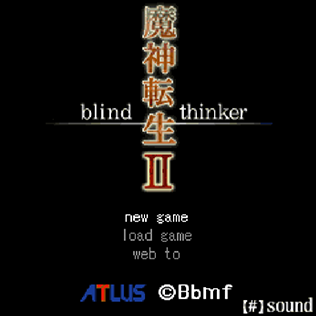
Majin Tensei: Blind Thinker II is a strategy role-playing video game developed and published by Bbmf for Japanese feature phones starting on March 24, 2008. It is a spin-off from Atlus's Majin Tensei series, which itself is part of the larger Megami Tensei series, and follows the 2007 game Majin Tensei: Blind Thinker.

Digimon Story: Cyber Sleuth – Hacker's Memory is a role-playing video game developed by Media.Vision and published by Bandai Namco Entertainment for PlayStation 4 and PlayStation Vita. It is the follow-up to 2015's Digimon Story: Cyber Sleuth, part of the Digimon Story series, and based on the larger Digimon franchise. The game shares elements and locations from its predecessor, while featuring a new story set during its events.
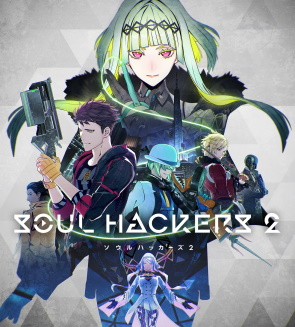
Soul Hackers 2 is a 2022 role-playing video game developed by Atlus. It was published by Atlus in Japan and by Sega worldwide for PlayStation 4, PlayStation 5, Windows, Xbox One, and Xbox Series X/S. The game is the fifth installment in the Devil Summoner series, itself a part of the larger Megami Tensei franchise, and a sequel to Devil Summoner: Soul Hackers (1997). The plot follows Ringo and Figue, manifested agents of the artificial intelligence Aion, as they seek and recruit people from rival groups of Devil Summoners who are key to preventing an approaching apocalypse. Gameplay has Ringo and her party exploring dungeon environments within a futuristic city, and fighting enemies in turn-based combat.

Megami Ibunroku Persona: Ikū no Tō-hen is a role-playing video game developed and published by Bbmf. It is a spin-off from Atlus's 1996 game Revelations: Persona, and part of the Persona series, itself a part of the larger Megami Tensei series. It was originally released for Japanese feature phones on December 1, 2006, and was re-released by G-Mode for Nintendo Switch and Windows in September 2023 as part of their G-Mode Archives+ line, after being unavailable for years.
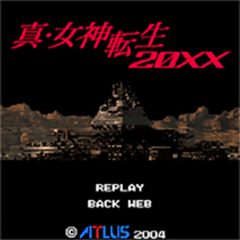
Shin Megami Tensei: 20XX is a role-playing video game developed and published by Atlus. It is part of their Megami Tensei series, and is a prequel to the 1994 game Shin Megami Tensei II, taking place decades earlier. It was released for Japanese feature phones starting on August 26, 2004, and was followed by the spin-off game Shin Megami Tensei: Devil Colosseum 20XX in 2007.

Aegis: The First Mission is a 3D action role-playing video game developed and published by Bbmf. It is a prequel to Atlus's 2006 game Persona 3, and part of the Persona series, itself a part of the larger Megami Tensei series. It was originally released for Japanese feature phones on October 29, 2007, after which it became unavailable for years and was considered lost, until G-Mode announced a re-release for Nintendo Switch and Windows as part of their G-Mode Archives+ line as Persona 3 Aegis: The First Mission.
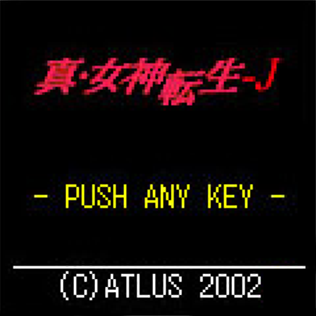
Shin Megami Tensei J, also released as Shin Megami Tensei EZ, was a role-playing video game developed and published by Atlus. It is part of the Megami Tensei series, and was released for Japanese feature phones starting on April 1, 2002, through a monthly subscription.

Devil Summoner: Soul Hackers New Generation is a role-playing video game developed and published by Bbmf. It is a spin-off from Atlus's Devil Summoner series, which in turn is part of the Megami Tensei series. It was released for Japanese feature phones starting on July 22, 2008, and was Bbmf's second time making a game based on Devil Summoner: Soul Hackers, following their 2007 strategy role-playing game Soul Hackers Intruder.

